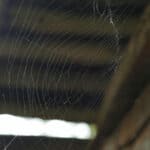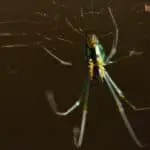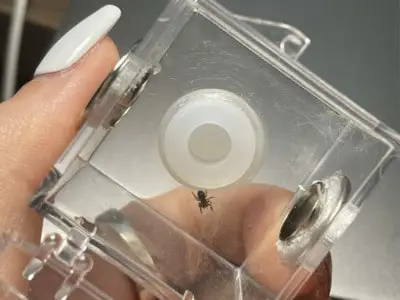Drawing a black widow spider may seem like a daunting task, but with the right techniques and tools, anyone can learn how to do it. In this article, I will guide you through the process of drawing a black widow spider step-by-step, from gathering your art supplies to adding details to the abdomen. Whether you are an experienced artist or a beginner, you will find this tutorial easy to follow and fun to do.
To start, you will need a few basic art supplies, such as paper, pencils, erasers, and markers. Once you have your supplies ready, you can move on to understanding black widow spider anatomy, which will help you create a more realistic and accurate drawing. You will learn about the spider’s body parts, such as the cephalothorax, abdomen, and legs, and how they are connected to each other.
After learning about the spider’s anatomy, you will be ready to start your spider sketch. You will begin by drawing the spider’s body and legs, and then move on to adding details to the abdomen and joints. Finally, you will learn how to color and shade your spider to bring it to life. By the end of this tutorial, you will have a beautiful and realistic drawing of a black widow spider that you can be proud of.
Key Takeaways
- With the right tools and techniques, anyone can learn how to draw a black widow spider.
- Understanding the spider’s anatomy is essential for creating a realistic and accurate drawing.
- By following these step-by-step instructions, you can create a beautiful and detailed drawing of a black widow spider.

Gathering Your Art Supplies
When it comes to drawing a black widow spider, having the right art supplies is crucial. Here are some of the essential items you’ll need:
Paper
First and foremost, you’ll need paper to draw on. You can use any type of paper you prefer, but we recommend using a heavier weight paper, such as cardstock, to prevent your drawing from bleeding through.
Markers
Markers are great for creating bold, dark lines that really make your spider stand out. We recommend using a black marker to outline your spider and add details to its body.
Colored Pencils
Colored pencils are perfect for adding shading and texture to your spider. We recommend using a range of shades, including black, gray, and red, to create a realistic-looking spider.
Crayons
Crayons are a great option for adding color to your spider. They’re easy to use and come in a variety of colors. We recommend using red and black crayons to color your spider.
Overall, having a variety of art supplies will give you the flexibility to create a unique and detailed black widow spider drawing. So gather your supplies and let’s get started!
Understanding Black Widow Spider Anatomy
As an artist, it’s important to have a basic understanding of the anatomy of the subject you are drawing. When it comes to drawing a black widow spider, there are a few key features that you should be aware of.
The black widow spider is easily recognizable by its black body and red hourglass-shaped marking on its abdomen. It’s important to note that only the adult female black widow has this marking, which serves as a warning to potential predators.
The body of the black widow spider is divided into two parts: the cephalothorax and the abdomen. The cephalothorax is the front part of the body, which includes the head and thorax. This is where you will find the spider’s eight legs and two fangs.
The fangs of the female black widow spider are used to inject venom into their prey, which is primarily other insects. It’s important to note that male black widows do not have venomous fangs and are not considered dangerous to humans.
When drawing a black widow spider, pay close attention to the details of the fangs and the shape of the head. This will help to make your drawing more accurate and realistic.
In addition to the red hourglass marking on the abdomen, female black widows also have a shiny, jet-black color to their body. When drawing the abdomen, be sure to capture the unique shape and curvature of this part of the spider’s body.
Overall, understanding the anatomy of the black widow spider is crucial for creating an accurate and detailed drawing. By paying attention to the details of the cephalothorax, fangs, abdomen, and markings, you can create a realistic and visually appealing representation of this fascinating creature.
Starting Your Spider Sketch
Hey there! Ready to learn how to draw a black widow spider? Great! Let’s get started.
First things first, let’s gather our materials. You’ll need a pencil and paper. If you want to add some color to your spider, you can also grab some colored pencils or markers.
Now that we have our materials, it’s time to start sketching. We’ll begin by drawing a circle for the spider’s body. Next, we’ll add two ovals for the cephalothorax and abdomen. The cephalothorax is the front part of the spider’s body where the head and legs are attached, while the abdomen is the larger, rounder part of the body where the organs are located.
Once we have the basic shape of the spider, we can start adding details. Let’s draw four pairs of legs coming out of the cephalothorax. Black widow spiders are known for their black color and distinctive red hourglass shape on their abdomen, so we’ll make sure to add those details as well.
Remember, this is just the beginning of our sketch. We’ll continue adding more details and refining our drawing as we go along. So, let’s keep going and see where our spider sketch takes us!
If you’re feeling stuck or unsure about how to proceed, don’t worry! There are plenty of resources available to help you learn how to draw a black widow spider. You can check out online tutorials, watch videos, or even take a drawing class. The key is to keep practicing and experimenting until you feel comfortable with your spider sketch.
Now that we’ve got our materials and basic sketch in place, let’s move on to adding more details and refining our drawing. Stay tuned for the next section where we’ll dive deeper into the process of drawing a black widow spider.
Drawing the Legs and Joints
Now that we have the basic structure of the spider, it’s time to draw the legs. Black widow spiders have eight legs, which are long and thin. We will start by drawing one leg and then repeat the process for the remaining legs.
- Begin by drawing a curved line for the upper part of the leg. This line should be slightly curved, with a slight bulge in the middle.
- Next, draw a slightly curved line for the lower part of the leg. This line should be shorter than the upper part of the leg.
- Draw another curved line to connect the upper and lower parts of the leg. This line should be slightly curved, with a slight bulge in the middle.
- Repeat this process for the remaining legs.
Once all eight legs are drawn, we can move on to drawing the joints. Black widow spiders have joints in their legs that allow them to move in different directions. To draw the joints, follow these steps:
- Draw a small circle where the upper and lower parts of the leg meet. This circle represents the joint.
- Draw two curved lines on either side of the circle. These lines represent the upper and lower parts of the leg.
- Repeat this process for each leg.
Now that we have drawn the legs and joints, we can add some detail to make the spider look more realistic. Black widow spiders have small hairs on their legs, which help them to sense their environment. To draw these hairs, use short, curved lines along the length of the leg.
Remember to take your time and use light, curved lines when drawing the legs and joints. This will help you to create a more realistic-looking spider.
Adding Details to the Abdomen
Now that we’ve sketched out the basic shape of our black widow spider, it’s time to start adding some details to make it look more realistic. One of the most distinctive features of the black widow is its abdomen, which is often marked with an hourglass shape and other spots or patterns.
To start, we’ll want to draw the hourglass shape in the center of the spider’s abdomen. This shape should be wider at the top and bottom and narrower in the middle, with a slight curve to the sides. You can use a black marker or pen to draw this shape, making sure it’s centered on the spider’s body.
Next, we’ll add some spots or patterns to the rest of the abdomen. These can vary depending on the species of black widow you’re drawing, but some common patterns include stripes, spots, or a mottled effect. You can use a reference image to get an idea of what these patterns look like, or come up with your own design.
Once you’ve added the spots or patterns, you can also add some shading to the abdomen to give it more depth and texture. Use a pencil or shading tool to add some darker areas around the edges of the hourglass shape and the spots, and some lighter areas in between. This will help make the spider look more three-dimensional and realistic.
Finally, don’t forget to add some hairs or bristles to the spider’s abdomen. These can be drawn with short, curved lines around the edges of the hourglass shape and the spots, or scattered randomly across the abdomen. These hairs will help give the spider a more tactile and lifelike appearance.
With these details added to the abdomen, your black widow spider drawing should be starting to take shape. Next, we’ll move on to adding the legs and finishing up the drawing.
Drawing the Spider’s Web
When it comes to drawing a black widow spider, it’s important to not forget about its web. After all, the web is what makes the spider so iconic and recognizable. But how do you go about drawing a spider web?
First, start with a light pencil sketch of the spider itself. Once you have the spider outlined, you can begin to add in the web. Draw a series of lines that radiate out from the spider’s body, creating a sort of star shape. These lines will serve as the foundation for the web.
Next, draw curved lines that connect the radiating lines. These curved lines will create the circular shape of the web. Once you have the basic shape of the web down, you can begin to add in the details.
Using your pencil, draw additional lines that connect the radiating lines and curved lines. These lines will create the intricate pattern that makes up the spider’s web. Be sure to make the lines thin and delicate, as spider webs are incredibly intricate and delicate in real life.
If you want to add some extra depth to your drawing, consider shading in certain areas of the web. This will give the web a more three-dimensional look and make it appear more realistic.
Overall, drawing a spider web can be a bit tricky, but with some practice and patience, anyone can do it. Just remember to start with a light sketch and take your time adding in the details.
Coloring and Shading Your Spider
Now that you have completed your spider’s outline, it’s time to add some color and shading to bring it to life. Black widow spiders have a distinct color pattern, so let’s get started.
First, color the spider’s body black. You can use black colored pencils or crayons to fill in the body. Next, color the hourglass shape on the underside of the spider’s abdomen red. Be careful not to color over the black lines that outline the hourglass.
To add shading to the spider’s body, use a darker shade of black or gray to create shadows. Start by shading around the edges of the spider’s body and legs, where they meet the ground. This will create the illusion of depth and give your spider a 3D effect.
Another way to add shading is to use cross-hatching. Cross-hatching is a technique where you draw lines in different directions to create darker areas. Use your black or gray pencil to create cross-hatching lines on the spider’s body and legs.
If you want to add more detail to your spider, you can use white or light gray to create highlights. This will make the spider look shiny and more realistic. Use a white or light gray pencil to color in small areas on the spider’s body and legs where light would reflect.
Overall, coloring and shading your spider is a fun and creative process. Experiment with different colors and shading techniques to make your spider unique. Remember to have fun and enjoy the process!
Drawing a Cartoon Black Widow Spider
Are you ready to draw a cartoon black widow spider? Let’s get started!
First, let’s sketch out the basic shape of the spider. Draw a circle for the body and an oval for the head. Then, connect the two shapes with a curved line to create the spider’s thorax. Next, add eight legs by drawing four lines on each side of the spider’s body.
Now it’s time to add some details. Draw two large ovals for the spider’s eyes and add a small circle inside each one for the pupils. Then, draw a small triangle for the spider’s mouth and two curved lines for the fangs.
To make your cartoon black widow spider look more realistic, add some shading. Shade in the spider’s body and legs with a light gray or black pencil. Then, use a darker pencil to add some shadows to the spider’s head and thorax.
If you want to add some extra flair to your cartoon black widow spider, you can add some webbing. Draw some curved lines coming out of the spider’s body to create the web. You can also draw some flies caught in the web to add some extra detail.
Congratulations, you’ve successfully drawn a cartoon black widow spider! With a little practice, you’ll be able to draw this spider with ease.
Interesting Facts About Black Widow Spiders
As someone who loves to draw, I find it fascinating to learn more about the subject matter I’m drawing. So, I did some research on black widow spiders, and here are some interesting facts I discovered.
- Venom: Black widow spider venom is incredibly potent. However, it’s not usually fatal to humans. In fact, most people who are bitten by a black widow spider will experience only mild symptoms, such as muscle pain and cramps.
- Prey: Black widow spiders are known for their distinctive red hourglass shape on their abdomen. They are also known for their unique feeding habits. Unlike other spiders that wrap their prey in silk, black widow spiders inject their prey with venom and then wait for it to die before consuming it.
- North America: Black widow spiders are native to North America. They are found throughout the United States, as well as in parts of Canada and Mexico.
- Scary: Black widow spiders are often portrayed as terrifying creatures in movies and TV shows. While they are venomous and can be dangerous, they are not as scary as they are made out to be. In fact, black widow spiders are shy and will usually only bite if they feel threatened.
- Males: Male black widow spiders are much smaller than females and do not have the distinctive red hourglass shape on their abdomen. They are also not as venomous as females.
- Webs: Black widow spiders build irregular webs that are not as organized as other spider webs. They also tend to build their webs in dark, secluded areas, such as under rocks or in woodpiles.
- Lifespan: Black widow spiders have a relatively long lifespan for a spider. Females can live up to three years, while males usually only live for a few months.
Overall, black widow spiders are fascinating creatures with unique characteristics and habits. Learning more about them can help you appreciate their beauty and complexity, even if they are a bit scary.
Frequently Asked Questions
How to draw a spider step by step
To draw a spider step by step, start by drawing the spider’s body. Then, draw the spider’s legs and make sure to add the joints. After that, add the spider’s eyes and any other details you want to include. You can find step-by-step tutorials online to help guide you through the process.
Tips for drawing a realistic spider
To draw a realistic spider, pay attention to the details. Look closely at pictures of spiders to see their unique features. Use shading to give the spider depth and dimension. Also, make sure to draw the spider’s legs accurately, as they are a crucial part of its appearance.
How to draw spider legs
To draw spider legs, start by drawing the joints. Then, draw the individual segments of the leg, making sure to add any unique features like spikes or hairs. Finally, add the foot of the leg, which can vary depending on the type of spider you are drawing.
What are the key features of a black widow spider?
The key features of a black widow spider include its shiny black body, red hourglass-shaped marking on its abdomen, and long, thin legs. Black widow spiders are also known for their venomous bite, which can be dangerous to humans.
Are black widows dangerous?
Yes, black widows are dangerous. Their venomous bite can cause symptoms such as muscle pain, cramps, and spasms. In severe cases, a black widow bite can be fatal. It is important to exercise caution around black widows and seek medical attention if you are bitten.
How to stay safe around black widows
To stay safe around black widows, avoid disturbing their webs or nests. Wear protective clothing when working in areas where black widows may be present, such as garages or sheds. If you suspect you have a black widow infestation, contact a pest control professional to handle the situation.








